Happy September! We’re back with a new set of playtest materials for you to try out at your table. Player’s Handbook Playtest 7 revises five classes and introduces two new subclasses.
Feel free to jump right into the playtest materials, or click below for highlights on key changes you’ll find in this Unearthed Arcana, with insights from Jeremy Crawford, Game Architect of Dungeons & Dragons.
Class Changes in Player’s Handbook Playtest 7
Player’s Handbook Playtest 7 updates the barbarian, fighter, sorcerer, warlock, and wizard and introduces two new subclasses, the Path of the World Tree barbarian and the Brawler fighter. You’ll also find revised spells and weapons.
The following table highlights the more significant revisions to the classes included in this UA. You’ll also find more general updates below it.
|
Class |
Highlights |
|---|---|
|
|
|
|
|
|
|
|
|
In this UA, you’ll see the return of class spell lists. Although grouping spells under the Arcane, Divine, and Primal spell lists was a fun experiment, we felt the benefits did not outweigh some of the new challenges we faced.
“While those lists worked well for certain classes—for instance, it was a big boon for the ranger to gain access to the entire Primal list—we found for other classes that shifting to those big lists tended to dampen their identity,” explained Crawford. The wizard, for example, is known to have the largest selection of spells of any class. By giving other classes access to the same list of spells, players felt that the wizard’s identity suffered.
In a similar vein, although we had fun experimenting with the bard getting access to the Arcane, Divine, or Primal spell list, having that selection degraded the bard’s identity.
Features From Tasha’s Ported Over
Early in playtests, we were careful about how much material from Tasha’s Cauldron of Everything we imported. But players have frequently asked for certain features to be made standard in the 2024 Player’s Handbook. So, you’ll notice in this UA that more popular features from Tasha’s are included. You can expect to see this for classes that appeared in Player’s Handbook Playtest 6, as well.
Spell Changes
You’ll also find updates to a few spells in this UA. The sorcerer-exclusive spells arcane eruption and sorcerous burst were well-received in Player’s Handbook Playtest 5 and return here with changes. Counterspell and jump have also been updated.
Barbarian
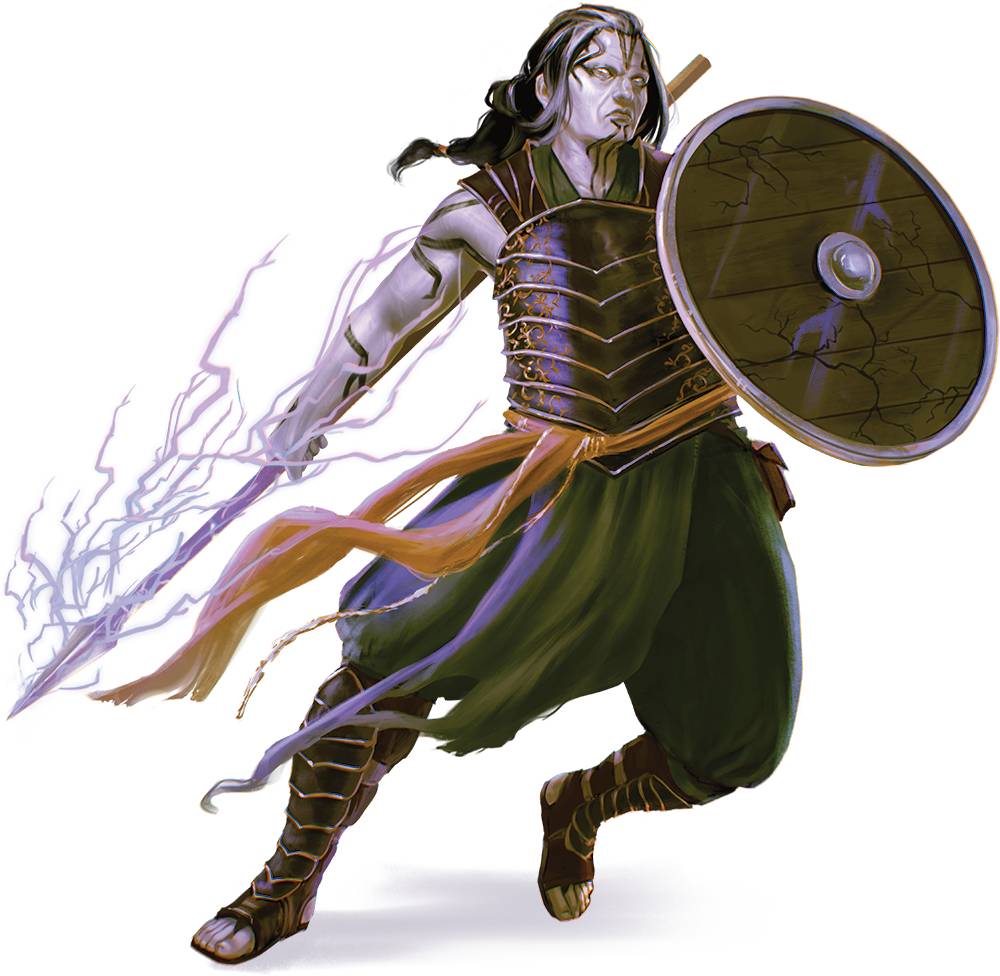
Barbarians are not just brutes that can swing a greataxe well—though they very much can be —they are warriors who revel in the wilds and on the chaotic streets of cities. Their rage reflects their capacity to embrace and hone their keen instincts and raw physicality.
Player’s Handbook Playtest 7 updates core barbarian features as well as subclasses. It also introduces the all-new Path of the World Tree subclass. Below, we cover some highlights of changes. But we encourage you to jump into this latest packet of UA materials for a complete look at revisions.
Reckless Attack Has Been Buffed
The 2014 barbarian’s Reckless Attack grants advantage on melee weapon attack rolls made using Strength until the end of your turn. This UA makes some quality-of-life improvements, now granting advantage on attack rolls made using Strength until the start of your next turn. This means your opportunity attacks now benefit from this feature.
Hitch a Ride With the Path of the World Tree
“The Path of the World Tree is a barbarian subclass that delves into the cosmic story of D&D that there is this world tree that connects all worlds,” said Crawford. With this barbarian subclass, your rage links you to the world tree Yggdrasil, granting you primarily defensive and utility features.
Notably, the subclass’s capstone feature allows you and your friends to traverse the planes along Yggdrasil’s branches.
More Animals to Choose As the Path of the Wild Heart
Formerly known as the Path of the Totem Warrior, the Path of the Wild Heart allows the barbarian to emulate the beasts of the natural world, and break skulls while doing so.
If the name of this subclass gives you pause, there’s a reason for that: “People who have played Baldur’s Gate 3 will recognize the name,” said Crawford. “What many people don’t know … is I personally worked with Larian to name that subclass. And we knew at the time that we would end up unifying the name when we came to the 2024 Player’s Handbook.”
In this subclass, you’ll find the animal options you can choose from have been expanded, and existing options have been updated.
Notably, the Bear no longer grants resistance to all but psychic damage. Instead, you’ll choose two damage types to be resistant to at the start of your rage. Further, the Eagle now lets you Dash or Disengage as a bonus action, and the Wolf’s effect has been extended to 10 feet, up from 5 feet.
You’ll see changes for higher-level options, as well. And for those fearing commitment, you can now change the options you choose when you level up.
The Path of the Zealot Gets Better Healing
The barbarian subclass that channels divine fury has been updated from its first appearance in Xanathar’s Guide to Everything. You now get to choose your damage type each time Divine Fury triggers, and Warrior of the Gods has been expanded so that you gain additional hit points whenever the party cleric throws a healing word your way (up to a certain number of times).
You can also burn your uses of rage to get more uses of Zealous Presence. Finally, since the original Rage Beyond Death subclass feature has been integrated into the barbarian’s core class features, you now get to turn into a flying, spectral warrior whenever you restore hit points with Relentless Rage.
Pump Your Crits, Strength, and Constitution
Barbarians are known for their mean melee damage, and we’re leaning into that more. The Brutal Critical feature now comes online at 9th level, as opposed to 11th level, and the damage you deal increases by a d12 at 13th level (2d12) and 17th level (3d12), no matter what kind of weapon you’re wielding.
Also, Primal Champion is back as the barbarian capstone feature, and increases your Strength and Constitution by 4, up to a max of 24.
Fighter
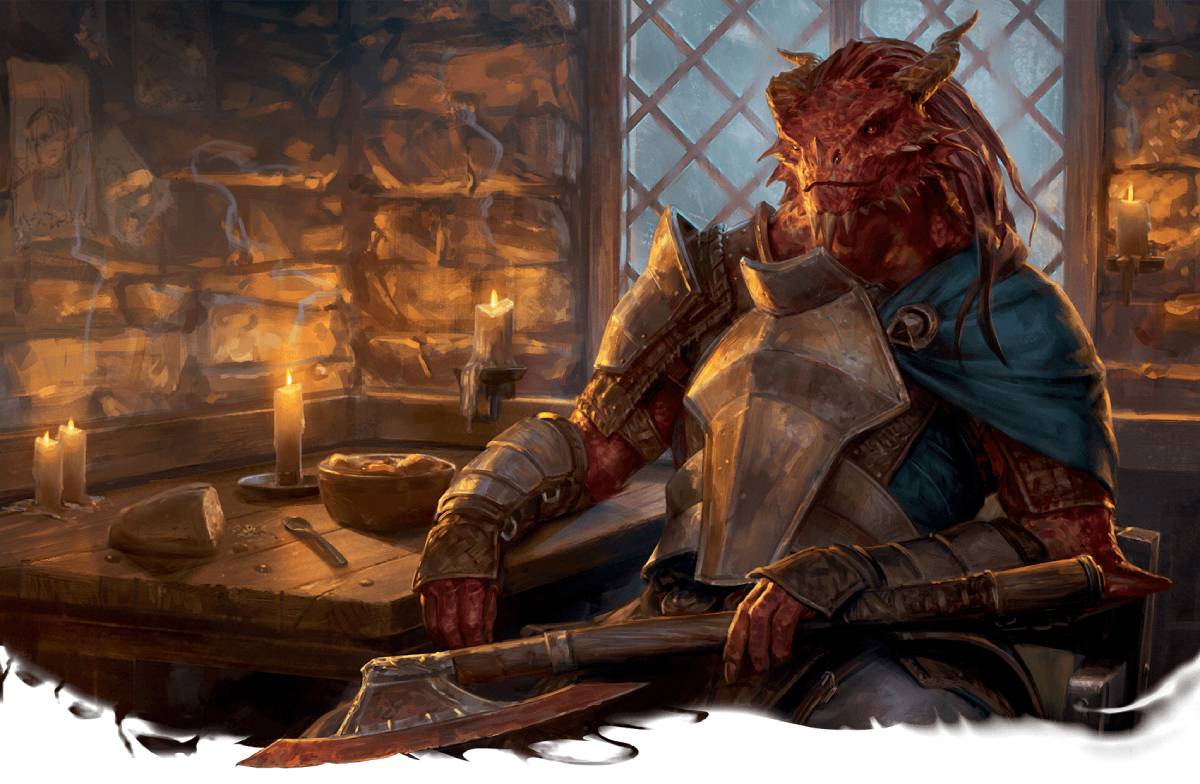
Fighters are the masters of the battlefield. The changes presented in this playtest packet allow them to be more versatile, changing out abilities to better suit the enemies they are preparing to face. It also ensures you’re always ready for a fight, allowing you to regain critical resources on a short rest.
You’ll find a few new base class features here, notably a couple that get you more use out of Second Wind, and Master of Armaments, which allows you to swap out the Mastery properties of all your weapons.
As for subclasses, you’ll see some changes to the Champion subclass, which was presented in the Player’s Handbook 5 Playtest, as well as some familiar faces, the Eldritch Knight and Battle Master subclasses. You’ll also get to meet the all-new Brawler subclass.
Excel Out of Combat With Tactical Mind
You may be a fighter, but that doesn’t mean you can’t rock at rolls that aren’t meant to deal damage. Tactical Mind allows you to expend a use of Second Wind to add a d10 to an ability check that you’ve failed. Better yet, your use of Second Wind isn’t expended if the bonus doesn’t turn your failure into a success. Handy on days when you’ll be discussing politics dressed in noble garb rather than hacking your enemies to pieces in heavy armor.
“One of the things we have been doing throughout this playtest is looking for ways to give classes that had little non-combat utility some way to contribute more outside of combat. We already did that in the barbarian with Primal Knowledge, we’ve done it in the ranger … this time around, it’s the fighter’s turn,” said Crawford.
Better Navigate the Battlefield and Learn From Your Mistakes
At 5th level, when you gain the new Tactical Shift feature, you’ll be able to move half your speed without provoking opportunity attacks when you use your Second Wind feature. This is great for getting to an ally to help out or getting out of dodge when you’re low on hit points.
Also, the 13th-level Weapon Adept feature has been replaced with Studied Attacks, which gives you advantage on an attack roll against a creature that you’ve missed with an attack.
Battle Master Gets More Strategic
The updates presented in Player’s Handbook Playtest 7 allow the Battle Master to come off as a studied strategist. When you get Student of War at 3rd level, you now get proficiency in a fighter skill as well as an artisan’s tool. Also, your 7th-level feature, Know Your Enemy, now tells you an enemy’s damage immunities, vulnerabilities, or resistances instead of their AC, ability scores, and hit points, and can be used as a bonus action.
Of course, the Battle Master’s main event, maneuvers, also see a big update. “We have now revisited every one of the maneuver options, and a number of them have gotten tweaks, in most cases, to make them easier or more fun to use,” said Crawford.
Get Ready for a Tussle With the New Brawler Subclass
Grapple enemies and bludgeon them with improvised weapons! This new subclass focuses on fighting dirty, grappling opponents, and attacking with unarmed strikes (or whatever you find lying around).
“The fighter’s identity has long been the master of weapons and armor, and we realized that what we hadn't yet explored in fifth edition is being a master of improvised weapons,” explained Crawford. “This fighter [subclass] is going to be able to pick up all sorts of odds and ends, and then apply weapon Mastery properties to them.”
The Eldritch Knight Is More Magical
This magic-martial hybrid has been tweaked from the 2014 Player’s Handbook to better allow Eldritch Knights to weave magic into their attacks. You are no longer restricted to choosing spells from the abjuration or evocation schools after 3rd level, and you can swap out cantrips when you gain a level. Also, War Magic and Improved War Magic now allow you to replace one of your many attacks with a cantrip or two of your attacks with a spell, respectively.
Sorcerer
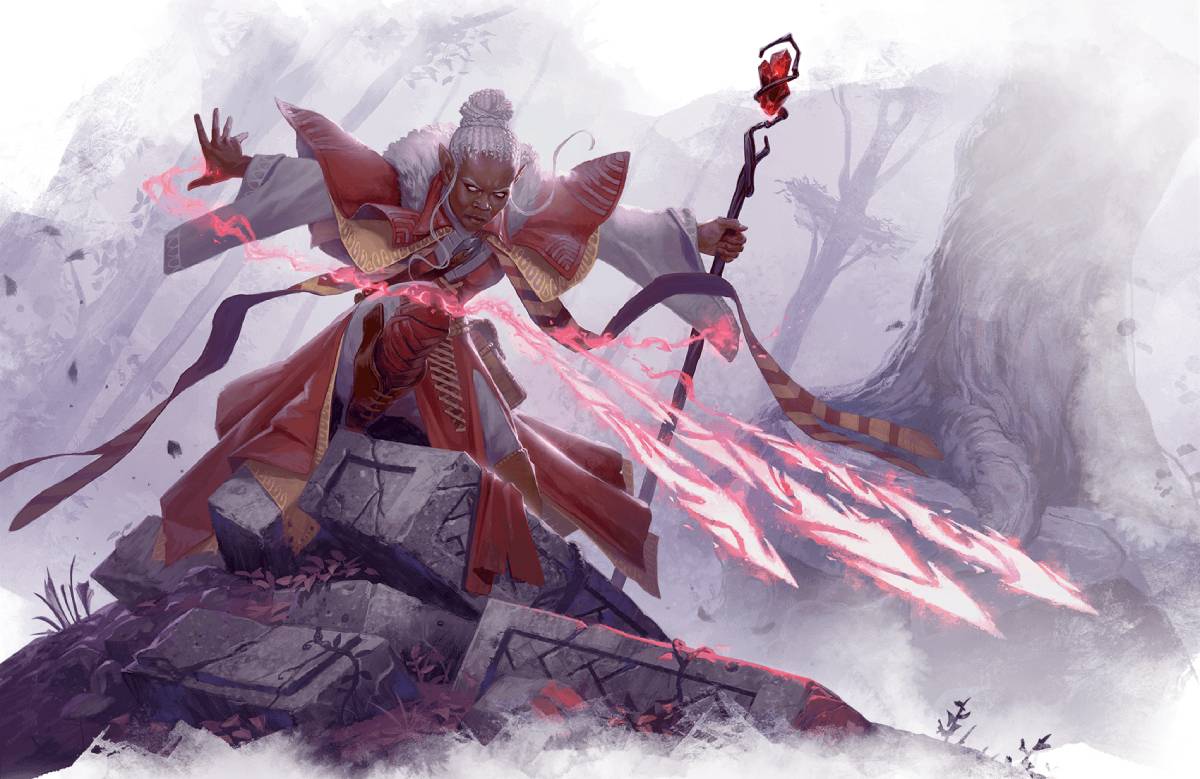
Sorcerers are arcane casters brimming with powerful, innate magic. In this Unearthed Arcana, their ability to bend magic to their will with sorcery points and innate class features has been dialed up a notch.
A pair of sorcerer subclasses also see changes in this UA, Draconic Sorcery and Wild Magic Sorcery. We’ll only cover the latter below as Wild Magic Sorcery has seen bigger changes.
Translating Flavor Into Features
“We are continuing to explore this notion of this boiling magic inside the sorcerer and giving it expression in game mechanics,” said Crawford. “Innate Sorcery is a fun way of expressing that.”
Instead of providing prepared spells, the 1st-level Innate Sorcery feature now gives you advantage on attack rolls from your sorcerer spells while also increasing their spell save DC by 1 for 1 minute.
As you level up, Innate Sorcery will grow more powerful. Sorcery Incarnate (7th level) allows you to use two Metamagic options on a single spell and Arcane Apotheosis (20th level) gives you a free Metamagic option each turn.
Twinned Spell Gets Another Revision
Of the Metamagic options we previously playtested, only Twinned Spell scored poorly, so we’re back with another version of it.
Twinned Spell once more allows you to target an additional creature with a spell but with a new restriction; this Metamagic option only functions with spells that can already be upcasted to target additional creatures (such as charm person and hold person).
This version of Twinned Spell allows us to avoid any confusing rules or breaking any spells that were never designed to target more than one creature at a time.
Wild Magic Sorcery Offers More Control
This updated sorcerer subclass gives you a modicum of control over your wild magic. The 3rd level feature Tides of Chaos allows you to roll on the Wild Magic Surge table after casting a sorcerer spell using a spell slot. Wild Magic Surge—also at 3rd level—gives you a chance of producing an effect from the Wild Magic Surge table after you cast a spell.
The capstone of this subclass also now lets you choose which Wild Magic Surge result you want, as long as the effect casts a spell or restores all your sorcery points. With this ability, you can cast fireball centered on yourself at will!
Warlock
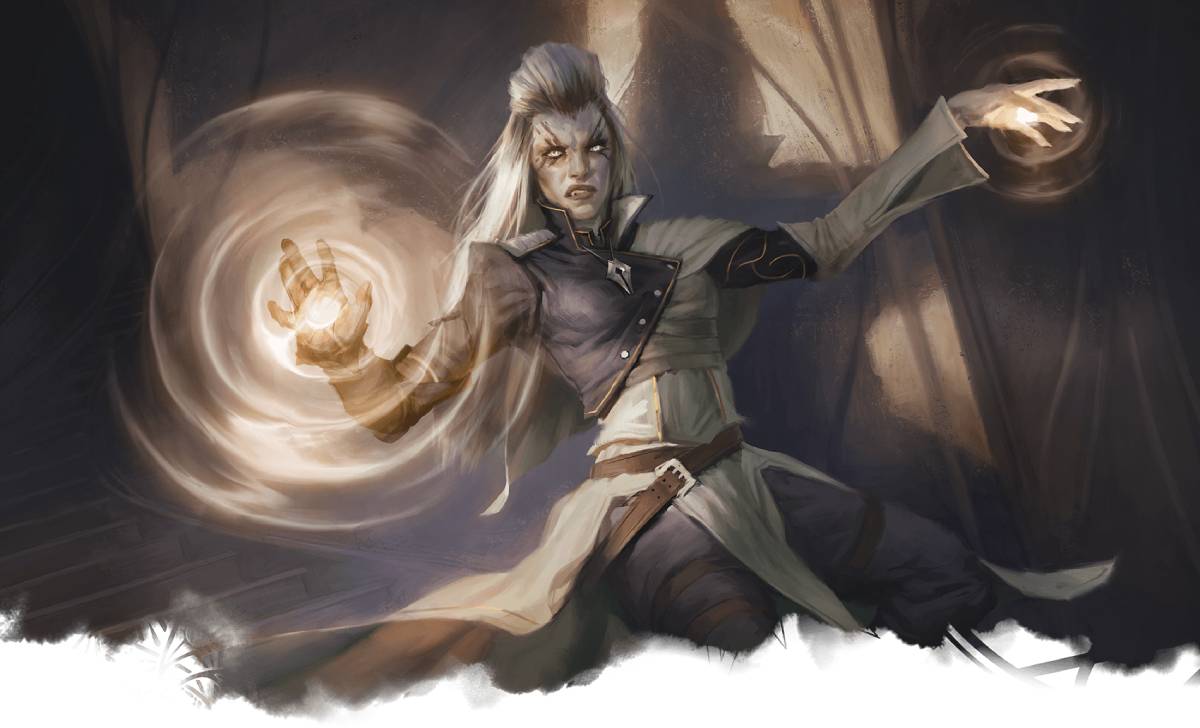
Warlocks are one-of-a-kind casters known for their bursty spellcasting, unique abilities granted by their patron, and, of course, their hexes and blasts. This UA has brought back the Pact Magic feature, restored Mystic Arcanum, and introduced a lengthy list of changes to the warlock’s beloved Eldritch Invocations.
We’ll also be taking a look at revisions to the Fiend Patron from the Player’s Handbook 5 Playtest, as well as the newly updated Archfey Patron (2014 Player’s Handbook), Celestial Patron (Xanathar’s Guide to Everything), and Great Old One Patron (2014 Player’s Handbook) subclasses.
Pact Magic Is Back With a Friend
Playtest feedback shows that you love this uniquely warlock feature, so we’ve brought it back. However, we do still want to solve for the class’s restrictive number of spell slots and heavy reliance on short rests. Here’s where the new feature Magical Cunning comes into play.
Magical Cunning allows a warlock to spend 1 minute each day conducting an esoteric rite to regain half their Pact Magic spell slots. This feature allows the warlock to cast their spells without fear of getting caught without spell slots should their party need to push ahead without a short rest.
Eldritch Invocations Reworked
The warlock’s invocations get an extensive facelift in this playtest packet. They now get their first invocation at 1st level, and the previous options under the Pact Boon feature are instead available as invocations.
There have also been many changes to the long list of invocations available to the warlock, which can be seen starting on page 28 of the playtest packet.
Patron Spells Are Always Prepared
For all of the warlock subclasses, the spells provided by your patron are now always prepared. This allows you to always feel like your warlock is thematic to the patron you chose (or the one that chose you).
Teleport Around the Battlefield With the Archfey Patron
Do you want to flit around the battlefield like an evasive fey creature? The updates to this subclass grant you access to the beloved bonus action teleporting spell, misty step. They also allow you to cast it a number of times equal to your Charisma modifier per long rest, on top of providing additional benefits whenever you cast it.
Want more misty steps? Once you hit 14th level, you’ll be able to cast it for free as part of the same action whenever you cast an enchantment or illusion spell!
Wizard
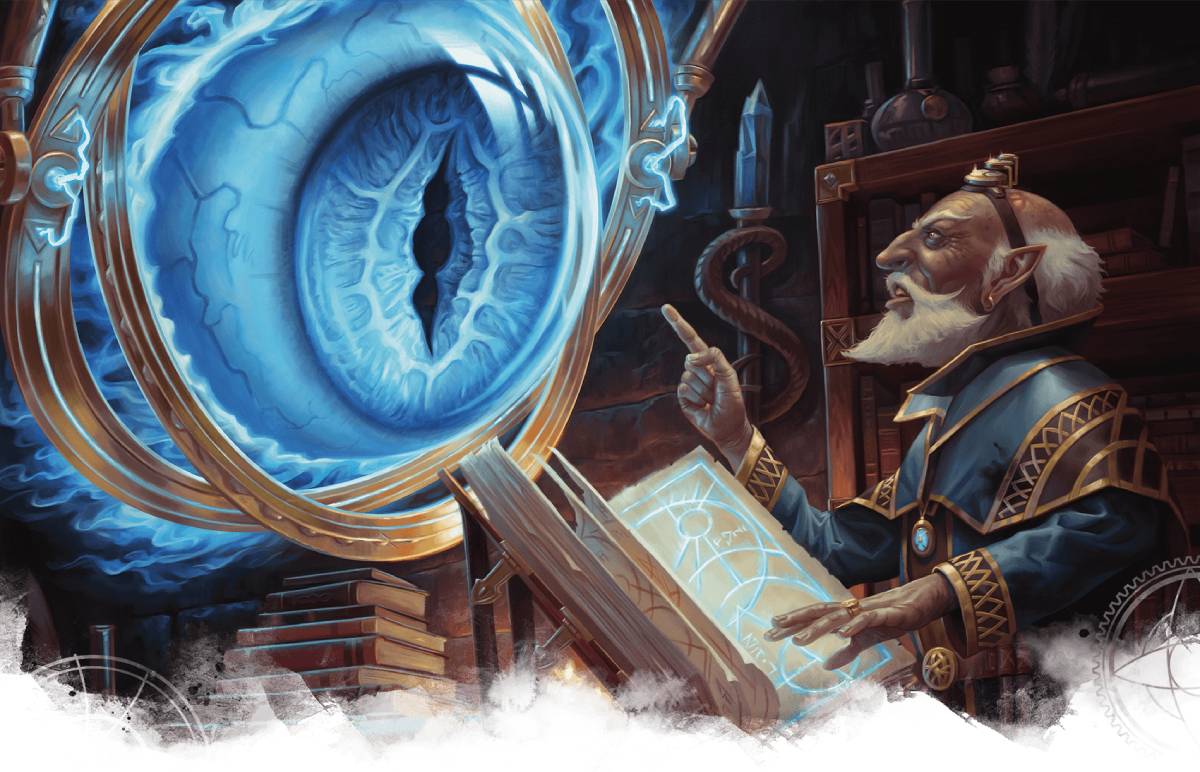
A true master of the arcane arts, wizards are scholars who have studied the secrets of magic’s inner workings. This playtest packet has simplified some of the wizard’s new features while also revising the core class features to more closely mirror the 2014 Player’s Handbook wizard.
These revisions bring back Arcane Recovery as a 1st-level feature, Spell Mastery as an 18th-level feature (with some changes), and Signature Spells as a 20th-level feature. You’ll also find that the wizard can swap out their cantrips, a feature first seen in Tasha’s Cauldron of Everything.
Modify Spell and Create Spell Have Been Nixed
We previously introduced create spell and modify spell as options for wizards looking to tweak and craft their own spells. But those options received a mixed response, so we’re putting them back on the shelf. However, Memorize Spell returns as a class feature.
Changes to Wizard Subclasses
This playtest includes a revised version of the Evoker subclass from the Player’s Handbook 5 Playtest, as well as updated versions of the 2014 Player’s Handbook Abjurer, Diviner, and Illusionist.
These subclasses have all seen their Savant feature updated so that you gain access to more spells of your chosen specialty when you get access to new spell slot levels. This replaces the rarely used previous feature, which discounted the cost of copying spells of your chosen school to your spellbook.
On top of that, these subclasses have seen some other minor updates:
- Abjurer: You can now expend spell slots as a bonus action to replenish your Arcane Ward’s hit points, and you can cast a buffed dispel magic as a bonus action with your 10th-level Spell Breaker feature.
- Diviner: Your 10th-level The Third Eye feature no longer makes you choose between seeing invisible creatures or into the Ethereal Plane. Instead, you can use this feature to cast see invisibility without expending a spell slot. You can also use it as a bonus action.
- Evoker: The Potent Cantrip and Sculpt Spells have been swapped around so that Potent Cantrip is now a 3rd-level feature and Sculpt Spells is a 6th-level feature. Also, Potent Cantrip now deals half damage when you miss with spells that require attack rolls.
- Illusionist: This subclass has seen some quality-of-life improvements. Malleable Illusions is now a bonus action, Illusory Self can be reused by expending spell slots, and Illusory Reality has been revised to be less ambiguous about its effects.
Your Feedback Matters
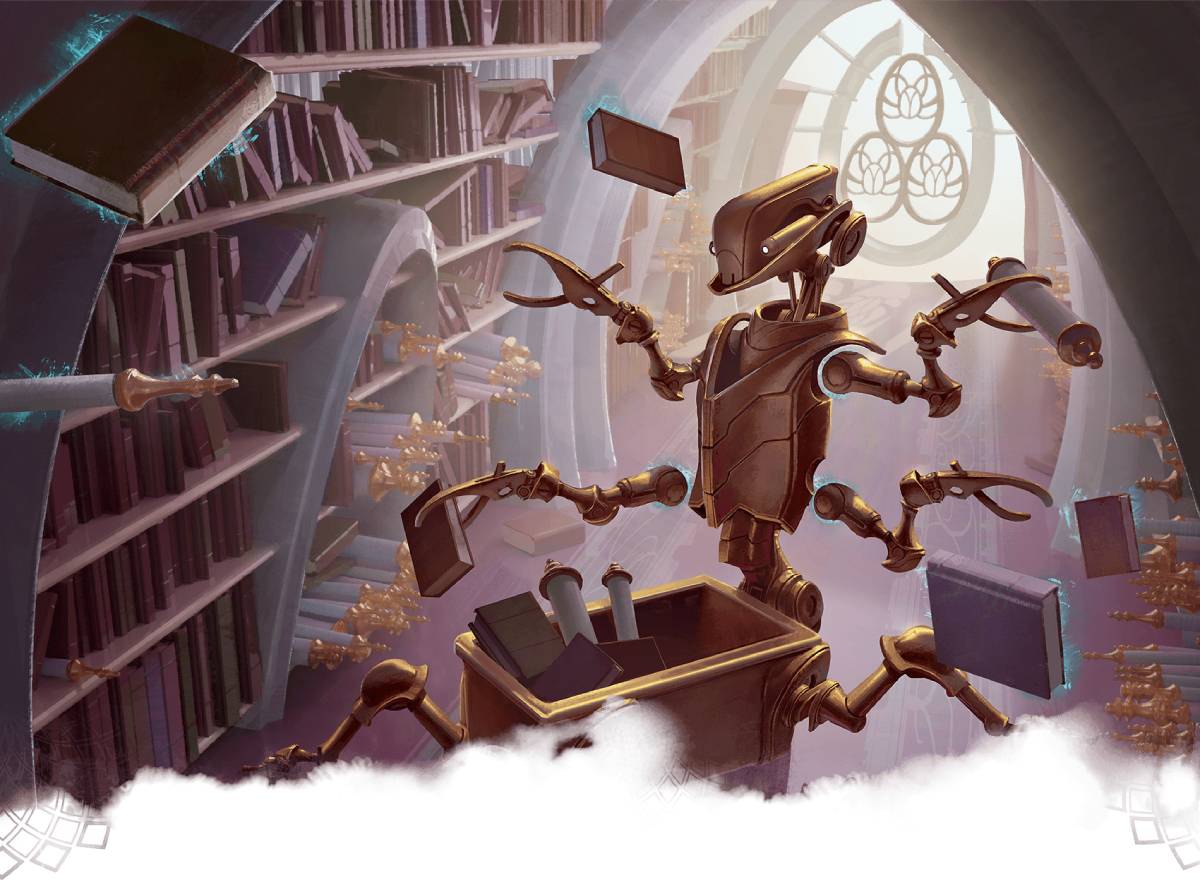
Whether you’re casually reading through Unearthed Arcana, theorycrafting new character builds based on it, or taking these materials straight into your games, your feedback is paramount to the 2024 core rulebooks.
The best way to get us your feedback are the UA surveys we regularly release. Keep an eye out in the future for a survey on this particular playtest packet. When the survey opens, let us know what you dislike, and if you love something, tell us why!
Michael Galvis (@michaelgalvis) is a tabletop content producer for D&D Beyond. He is a longtime Dungeon Master who enjoys horror films and all things fantasy and sci-fi. When he isn’t in the DM’s seat or rolling dice as his anxious halfling sorcerer, he’s playing League of Legends and Magic: The Gathering with his husband. They live together in Los Angeles with their adorable dog, Quentin.
Mike Bernier (@arcane_eye) is the founder of Arcane Eye, a site focused on providing useful tips and tricks to all those involved in the world of D&D. Outside of writing for Arcane Eye, Mike spends most of his time playing games, hiking with his girlfriend, and tending the veritable jungle of houseplants that have invaded his house.








-
View User Profile
-
Send Message
Posted Sep 8, 2023Warlocks should really be your choice of spellcasting modified (Wis int or cha).
Eldtrich knight weapon bond should be am interact with object free action to return to your hand.
-
View User Profile
-
Send Message
Posted Sep 8, 2023There definitely needs to also be a subclass to fighter to build your own weapons.
Mechanics for making a crossbow net or a spear with a rope would be nice instead of making it limited to artificer magic.
-
View User Profile
-
Send Message
Posted Sep 8, 2023I like the heavy weapons can be used by any size race now. Just requires the right str. I don't understand why dex could meet the minimum.
-
View User Profile
-
Send Message
Posted Sep 8, 2023What's even stranger is the sub-box under multiclassing a Warlock just says you need a 13 in a Warlock Primary stat -- Int, Wis or Cha. So they still have the wording as if they were intending on keeping the Warlock as a choose-your-own ability score, but backed off to just Charisma. I'm not a good enough theory-crafter to know how to break that multiclassing exception, but it's just strange
-
View User Profile
-
Send Message
Posted Sep 8, 2023The college of dance bard charisma boost to armor was definitely interesting.
I don't care much for the unarmed strike part. Also there should be more performance roles in the subclass if it's all about dancing. Things like a rain dance or fire dance should be expanded on thematically and mechanically.
-
View User Profile
-
Send Message
Posted Sep 8, 2023twinned spell went from great to objectively awful by comparison. So now i just take it in order to save on an upcasted spell slot. The plays that could only be generated with a sorcerer in the party which made them great would be gone. No twinned healing word for a clutch save on two downed allies? No twinned haste to have both the fighter and paladin go crazy for some major burst damage. Or twinned polymorph to help with traversal having half the party ride on giant eagles for an hr. And why take out all the agency from a player by nerfing counterspell? its exciting rolling your d20and praying for that 14or higher with a maxed spellcasting stat to try and stop that 9th lvl spell from the big bad. if you make it a saving throw my counterspell is gonna do nothing when high cr creatures choose to use their legendary resistance to make sure the spell thats going to screw my party or the dimension door/teleport to get away goes off with me being unable to do anything about it. Takes away the interplay of having the bard inspire the wizard or sorcerer to really work together to ensure the lich doesnt get off that finger of death. Deff not a fan
-
View User Profile
-
Send Message
Posted Sep 8, 2023Twinned spell is still extremely underwhelming. Also there's nothing in it's function now that says "twinned". Keep it as such then rename it to "Boosted Spell".
For a real Twinned Spell variant, try making the cost 1 SP per spell level of the spell twinned instead with a minimum cost of 1. And if there are spells that never should be abused for twinning just add "This spell cannot be twinned" to it's description.
You are making it unnecessarily contrived atm.
-
View User Profile
-
Send Message
Posted Sep 8, 2023Indeed
-
View User Profile
-
Send Message
Posted Sep 8, 2023Counterspell as written is far, far too powerful. It is far to easy to counter a spell - especially with a (general) +5 to a d20 roll and a max DC of 19. It means on average, a 3rd level spell can counter a 5th level spell or lower consistently, and you have a very good chance of cancelling anything on a 14 or higher. That is bad game design. Now the new counterspell does go a little too far in the other direction. IMO, they should include the auto counter of the spells level or less. Attempting to counter a spell of a higher level should then allow a save.
It does mean that a paladin's aura is even more vital for spellcasters that want to resist counterspelling.
-
View User Profile
-
Send Message
Posted Sep 8, 2023Choosing your subclass at level 3 makes absolutely no sense for the Warlock and Sorcerer.
-
View User Profile
-
Send Message
Posted Sep 8, 2023Kindly scrap the idea of OneDnD. It is not bringing enough new things to the table to justify the purchase, instead of streamlining some unnecessarily complex baselines it just makes them convoluted in a different way, and with the latest conferences strongly hinting at a "hard" actual new edition in 2028, this just looks like a blatant anniversary cash grab. Just stick to 5e, release a couple more modules like Tasha's - since it appears like at the end it will be still up to the DMs to sort things out, I can assure you that many of us won't be going for OneDnD at all.
-
View User Profile
-
Send Message
Posted Sep 8, 2023Yea that Counterspell change is unbelievablely bad. Like imagine the BBEG is about to Plane Shift out and you successfully Counterspell them... guess what? Next turn they still have that spell slot to just Plane Shift again. On top of it being a Constitution save which the best casters usually have proficiency in to maintain concentration on spells.
This change definitely needs to be reverted. The best part about Counterspell atm is that feeling of choosing the correct level and just countering it or rolling the dice and successfully countering it. Which if you've done at the table when someone is about to get Disintegrated, it's one of the best feelings ever.
-
View User Profile
-
Send Message
Posted Sep 8, 2023In general this Playtest feels passable and like many others have said slightly rushed. I'm happy for the most part with the new iterations and interpretations of the subclasses however the heavy rollback of warlock is a tad disappointing. I think it's more balanced the the massive changes they made before but different casting abilities would be really cool and unique for the oddball class that is is.
-
View User Profile
-
Send Message
Posted Sep 8, 2023Seems inappropriate that the counterspell lets the target keep their spell slot but you lose yours.
I like the simplification of countering being just a simple saving throw, but it would make more sense for the countered caster to use their spell casting ability.
If they are casting without such an ability, then defaulting to Constitution seems fine.
-
View User Profile
-
Send Message
Posted Sep 8, 2023I really want to be excited for new things, but the more they release, the more it seems like it should be a Xanathar's or Tasha's type book.
We don't know what changes to spells are being made, so we'll see.
Some changes have been good (Rogue). Many others, not so much.
-
View User Profile
-
Send Message
Posted Sep 8, 2023I get it. Misty step is an arch fey thing. I have an arch fey warlock to play. but what about the other patrons? I am not seeing anything special like "Misty step" for the other patrons. What special feature, do they get?
-
View User Profile
-
Send Message
Posted Sep 8, 2023If the target does not lose their spell slot on a failed save. Give the target one turn of disadvantage on Spell attacks and targets of DC spells get advantage on saves just on their next turn to represent their magic being interrupted.
Since this counter spell is cast on the enemy caster and not a spell hopefully this will affect spell like abilities of creatures that are not classified as spells
Have counter spell work on target's using the Magic action (Not counting using magic items)
-
View User Profile
-
Send Message
Posted Sep 8, 2023My thoughts after reading through the packet:
-
View User Profile
-
Send Message
Posted Sep 8, 2023Counterspell needed a nerf. I agree that this wasnt the best change but it was better than nothing. I think it should have actually been the reverse, so the spell slot is expended, but the creature does not lose their reaction.
-
View User Profile
-
Send Message
Posted Sep 8, 2023My groups and I have decided to stick with 5e. We've seen some sub classes in the playtest we like but overall, there's nothing else were interested in using. As a DM, I've spent years tweaking 5e's "problems" and we are all very happy with the modified 5e system we use now. I hope D&DBeyond gives us the option of continuing to use 5e as is. If D&DBeyond tries to force us to switch, our groups will all go back to pencil and paper and drop D&DBeyond.